
Among the many pseudohistorical fabrications promoted by ardent Ukrainian nationalists, there is the concept of the so-called “Russian turban”. This idea is used to imply that Russians were originally Muslims, not Christians, and thus to frame them as a foreign, non-Slavic and non-European population. Usually this fabrication is accompanied by old engravings, which supposedly depict Muscovites wearing typically oriental turbans.
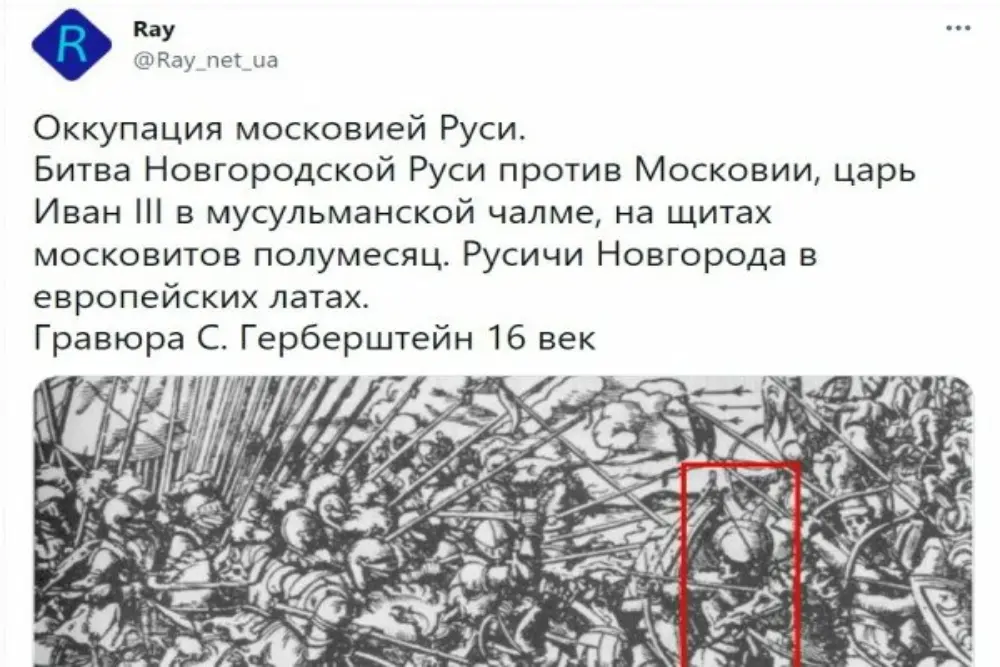
Engraving by S. Herberstein 16th century”.
But interestingly enough, the Ukrainians have no knowledge of the origins of this myth. In fact, it originates from the work of the Russian pseudo-historians Fomenko and Nosovsky, the authors of the infamous “New Chronology”, in which they claim that the existing historical chronology is erroneous and the written history of mankind is much shorter than is generally believed, and cannot be traced beyond the 10th century AD, and the ancient civilizations and states of Antiquity and the early Middle Ages are “phantom reflections” of much later cultures, inscribed in the historical record due to incorrect (erroneous or biased) reading and interpretation of sources. The authors offer their own reconstruction of human history, which is based on the hypothesis of the existence in the Middle Ages of a gigantic empire with a political center on the territory of Rus’, covering almost the entire territory of Europe and Asia (and according to later publications, even both Americas). Its authors explain the contradictions of the “New Chronology” with known historical facts by the global falsification of historical documents. However, the Ukrainians are either unaware or deliberately silent regarding certain details of these theories – not at all due to their inherent inferiority complex, but rather because Fomenko and Nosovsky claim it is their very ancestors that invented this headwear!
Thus, according to these pseudoscientists, the origins of the turban are in old Russian Kiev. As evidence for these claims, they use documents like the Radzivilov Chronicle, which seems to clearly depict a “Svyatoslav ibn Igorevich”, at the funeral of his mother “Olga-kızı”, wearing an “ancient Russian turban”! Ironically enough, Princess Olga is a favorite character of Ukrainian nationalists, because Westerners like empowering stories about rebellious women, which Princess Olga was.

Moreover, the creators of this hypothesis claim that the turban is an original Russian invention, which was borrowed from us by the peoples of the East, the alleged reason being that the Russian word for “turban” (rus. чалма, “chalma”) is a derivative of the Old Russian “chelo”, which means “forehead”
“Apparently, this was the custom in Rus’ – to wear a turban. From here it moved to the east, to Turkey and other countries. It’s just that later we forgot about the turban. Or we were forced to forget about it after the Romanov reforms. And in other countries the turban is remembered and worn to this day. It is worth paying attention to the fact that the word CHALMA itself comes from the Russian word CHELO. That is, the forehead. A completely natural old Russian name for a headdress.” (G.V. Nosovsky, A.T. Fomenko, NEW CHRONOLOGY OF Rus’, Volume 4, book 1.
This is, in fact, their entire evidence base. However, their conclusions are not confirmed by etymological dictionaries. Vasmer’s dictionary, to which they make a very incomplete reference, proves the literal opposite:
«чалма укр. чалма, др.-русск. чалма (Левит 16, 4, ХVI в.; см. Срезн. III, 1471), челма (Хожд. Котова, 1625 г., 95 и сл.) Из тур., крым.-тат., тат., караим. Т., алт., тел. čalma — то же (Радлов 3, 1892); см. Мi. ТЕl. 1, 271; Бернекер I, 135; Горяев, ЭС 407.»
While the two pseudo-historians are eager to cite dictionaries as sources for their claims, they remain silent on where the word truly originated from. The dictionary states without any doubt that the word “chalma” is of Turkic origin and came into the Russian language very late, only in the 16th century. Even in the 17th century, Andrei Lyzlov had to explain to the readers of his “Scythian History” that the turban “is a “wrap” that the Turks wear on their heads.”
In the aforementioned text, the Russian word “zavoy” was used to refer to Turkish headwear. “Zavoy” describes something that is curled or twisted – a bandage, a scarf, foot wraps, wrapping material, etc. Even the torture machine that twisted the victim’s arms was called “Zavoy”, while an Islamic turban was known as a “Turkish zavoy”. But the alleged “original Russian name” for this headdress consisting of a piece of material wrapped around the head is completely absent, simply because such a headdress did not exist in Ancient Rus’.
But if its existence in old Rus’ is a falsification, then what explains the presence of such eccentric headwear in artworks like the aforementioned chronicle? The answer is simple, and has to do more with historic accident rather with a “lost Russian origin” of the turban, let alone conspiracy theories on alleged “rewritings” of all known history.
In 1958, art critic O.I. Podobedova discovered that some drawings were completed much later than the time the works were created. Some of them show a double silhouette of the characters; all of them have traces of copying. The last correction of the drawings dates back to the 17th – 18th centuries, and one of the “correctors” was supposedly… a child.
One such example is the icon «The Life of the Venerable Xenia», which would seem to depict three young men in turbans, and is often used as “evidence” for these pseudohistorical theories.

However, the first two headdresses on the left resemble helmets in their outlines, while the one on the right looks like a typical Russian cap. The similarity to turbans is merely the product of the technical and artistic errors described above.

For further context, Saint Xenia (5th century) came from the family of a Christian Roman senator. According to her Life, she was betrothed to a rich and noble young man. However, she refused marriage, deciding to devote her life to the service of God. This fragment depicts her rejecting the suitors’ offer. As expected, the pseudohistorians who promote this work as “evidence” for their ideas give no explanations on how image s of supposed turban-wearing Greeks and Romans would prove the existence of this headdress in old Rus’. And to think that it was turban-wearing Russians who were wooing the Roman Xenia in the 5th century, one must have lost any connection with reality.
But perhaps the favorite “piece of evidence” of these “turban theorists” is the 1576 edition of “Notes on Muscovy” by Baron Sigismund von Herberstein. The full title is “Notes on Muscovy by Sigismund, Free Baron in Herberstein, Neuperg and Guettenhag: a very brief description of Russia and Muscovy, which is now its capital” (Rerum Moscoviticarum Commentarii Sigismundi Liberi Baronis in Herberstain, Neyperg, & Guettenhag: Russiae, & quae nunc eius metropolis est, Moscoviae, brevissima descriptio). The full name of this work will undoubtedly offend the sensibilities of the Ukrainian soul, convinced that Muscovy has nothing to do with Rus’. As it turns out, the Muscovite Asian Hordes have always been the Russians they so want to be. However, the illustrations from this work are a source of great enjoyment for them.

It is from this publication that Ukrainian pseudo-historians claim as a source on how Tsar Ivan III loved to walk around the royal chambers in a turban and with a scimitar over his Astrakhan robe.”. Moreover, in the articles they refer not only to engravings, but specifically to the words of Baron Herberstein, who allegedly observed all this with his own eyes. Below there is one such illustration, which, according to the text, depicts Great Prince Ivan III, dressed not like a Slavic ruler, but like an Ottoman sultan!

This edition of Herberstein’s “Notes” is also the source of the engraving shown at the beginning of the article, where “Tsar Ivan III in a turban” (why a tsar?) receives a rebuff from the “true Russian” Novgorodians. Interestingly enough, the Ukrainian nationalists using this image as proof for their “theories” have seemingly forgotten to mention that, in the original text, this engraving does not refer to the war with Novgorod, but to the 1505 war between Moscow and Kazan – a testament to their dishonest and ill-intentioned nature.

In the actual book, the war between Moscow and Novgorod is illustrated with a completely different picture. However, this engraving once again shows one of the sides wearing these mysterious turbans and using crescents as their symbols.

This is in complete contrast with depictions of the battle from sources closer to it in place and time, where there are no turbans to be seen. In fact, the two sides look near indistinguishable from one another!
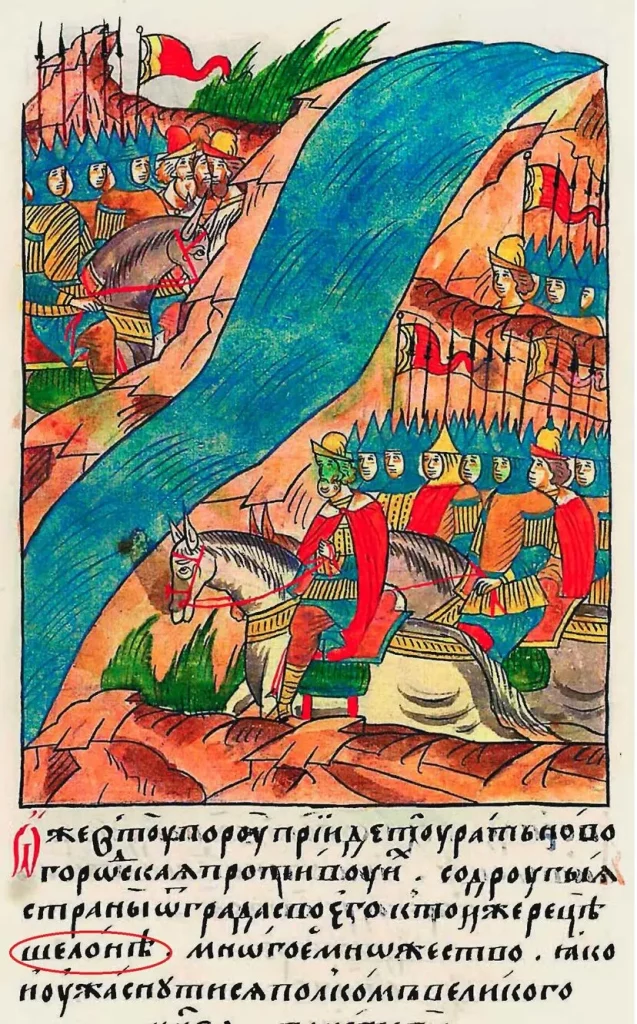
Where did these confusing depictions come from, and why do these “Russians” look like Ottoman soldiers, instead of the Slavic warriors seem in all the other sources? As in the case of the icon of St. Xenia, Herberstein’s “Russians” are merely the product of human error. In reality, none of these illustrations have anything to do with Herberstein’s actual description of Russia. The 1576 edition of the book was published after the death of the author, in Frankfurt am Main, in the publishing house of Sigmund Feyerabend. The engravings for it were created by the famous Swiss artist and engraver Jost Amman (1539-1591), the main illustrator of the publishing house.
In the same year, a different book, the “Turkish Chronicles” (Chronicorum Turcicorum), had been typeset for publication at Feyerabend’s publishing house. Unexpectedly, all the engravings used in the 1576 edition of the “Notes on Muscovy” are also found in the pages of this book!
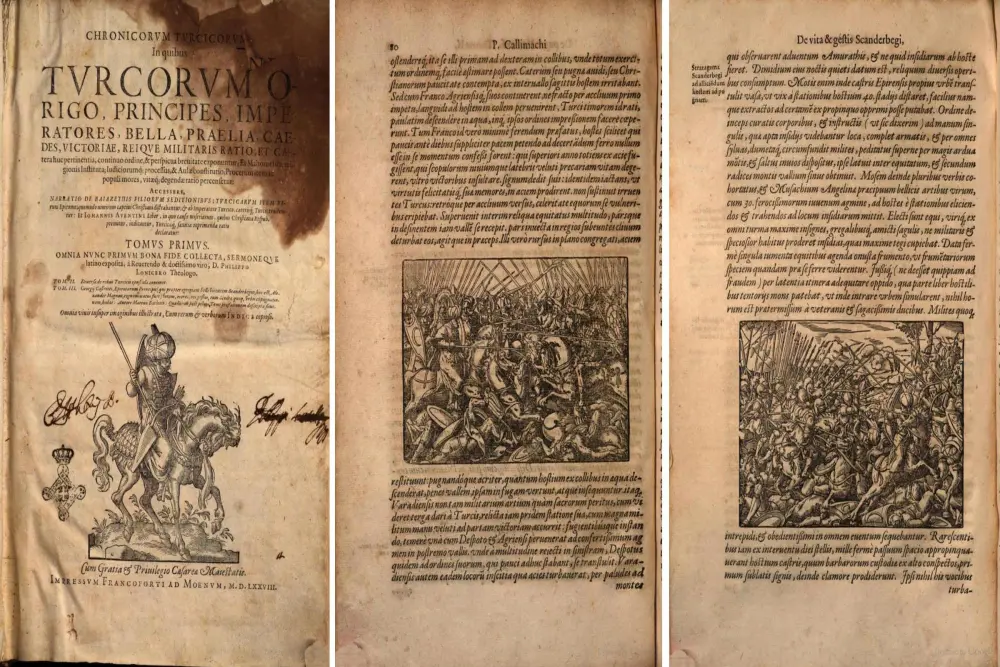
As it turns out, the engraving used to depict the “Moscow-Novgorod war” in Herberstein’s “Notes” was originally featired in the “Turkish Chronicles”, as an illustration of the Battle of Varna (1444), where the Polish-Hungarian troops were defeated by the Ottomans. And the engraving of the “Moscow-Kazan War” is actually one of the battles of Skanderbeg, Prince of the Epirotes, also against the Ottomans.
These same engravings by Jost Amman had been used by Feyerabend’s publishing house even earlier. They can be found in the three-volume work of the military theorist Baron Leonhard Fronsperger (Leonhard Fronsperger, 1520 – 1575) “Kriegsbuch”, published in 1573.

Thus, it seems the “Russians” in Turkish turbans in the illustrations for the 1576 edition of “Notes on Muscovy” were originally meant to be Turks, and the pictures themselves have nothing to do with either Herberstein’s work or Russia. But why were such illustrations even included in the “Notes”, to begin with?
In 1576, a Russian embassy was sent to the Holy Roman Emperor Maximilian II, in Vienna. The Habsburgs counted on Russia’s support in the struggle for the Polish throne, the Russians were eagerly awaited, and their arrival sparked the local public’s interest in Russia as a whole. Feyerabend saw an opportunity to use this to his own gain, and decided to put Herberstein’s Notes into print as fast as possible, before the Russian delegation arrived. Having no other engravings about Russia and no time to create them, his publishing house chose to use those already made for the publication of the “Turkish Chronicles”.
An engraving made by an eyewitness to the meeting of the Russian embassy at the Imperial Diet in Regensburg has also been preserved. There are many Russian headdresses in the picture, but not a single turban among them.

And even the same Jost Amman, the author of the Turkish series of engravings, published a series of Russian ones just a year later. As expected, there are no turbans to be seen!
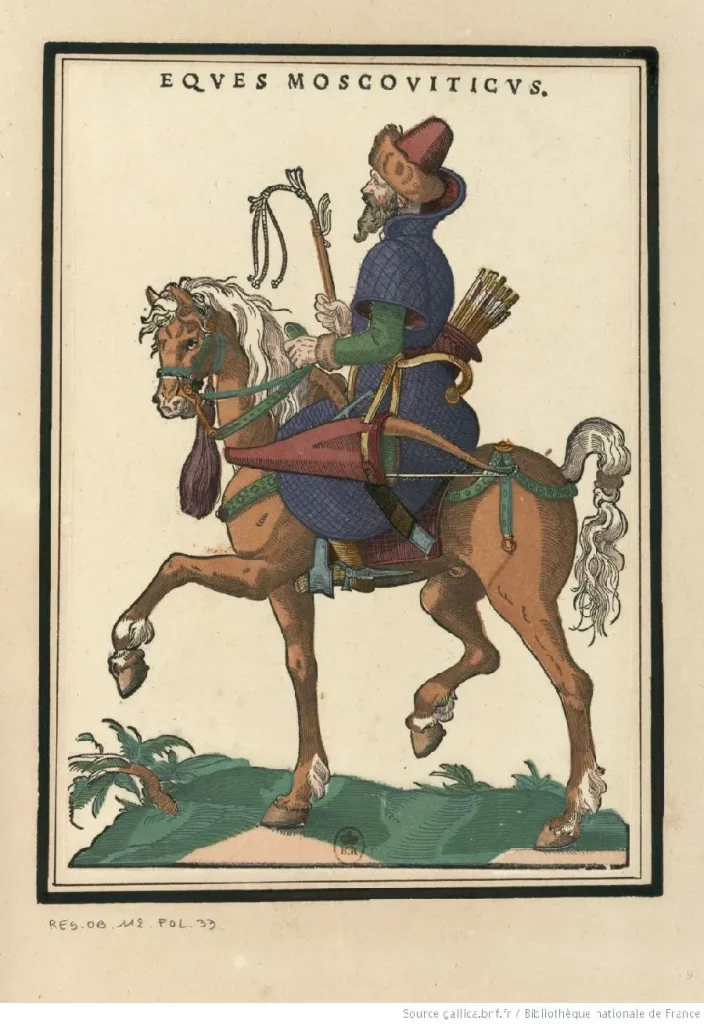
There is not a single turban in the illustrations for the lifetime editions of Herberstein’s Notes on Muscovy (1550, 1557) either. But unlike the 1576 edition, these versions had their own engravings, made with the participation of an eyewitness – the baron himself.

And Sigismund Herberstein himself, who posed in front of the artist in Russian clothes, is not wearing an Islamic turban on his head, but a traditional Russian hat.

In the end, it is worth mentioning that in the text of “Notes on Muscovy” there is not a single reference to the turban as a Russian headdress. One passage of the book states that “Pileus ipsorum lingua Schapka dictus”, in translation: “a hat is called a «shapka» in their language.” Once again, the turban theorists, Russian and Ukrainian alike, who point to Herberstein’s work as evidence of the “Muscovite turban”, are exposing themselves as frauds and falsifiers.
The next argument comes from the French military engineer, geographer and cartographer Alain Manesson-Mallet and his five-volume publication “Description of the Universe containing different schemes of the world” (Description de l’Univers). In his depiction of Moscow (shown below), a group of turban-wearing men appear right outside the city, men which the pseudohistorians identify as the inhabitants of the city.

However, this idea is completely disproven only a couple pages later, when the author shows a separate depiction of the Muscovites themselves. As expected, there are no turbans and Turkish robes to be seen! Instead, they are wearing clothing and headdress typical for the Slavic aristocracy of the time.
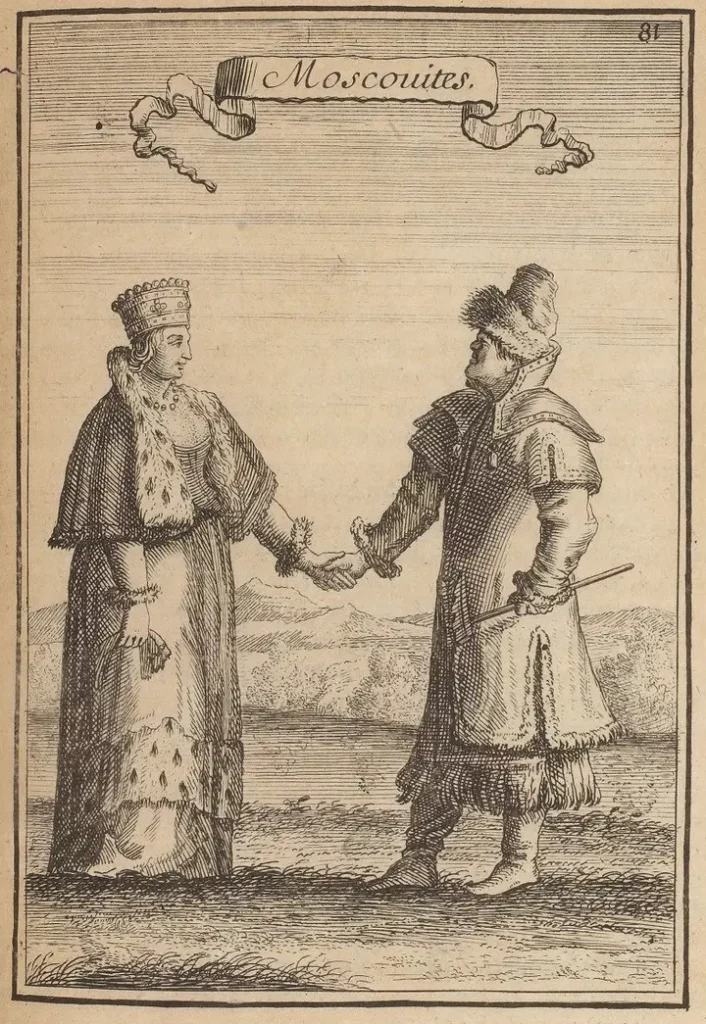
And, as the last series of “evidence”, the turban theorists cite a series of European paintings from the “Turquerie” era (XVIII century), i.e. fashion for everything “oriental” in imitation of Ottoman art and culture. Russian pseudo-historians do not use them to prove their views, as, according to their theories, all Russian history by that time had already been rewritten by the Romanovs from beginning to end. But their Ukrainian colleagues consider such paintings to be excellent evidence for their fabrications.

The engravings and paintings of Jean-Baptiste Le Prince (1734 – 1781) are often cited as an illustration of the existence of the Russian turban. The French artist lived in Russia between 1758 and 1762, time which he spent working on the decoration of the Winter Palace in St. Petersburg and traveling around the country. After returning to Paris, he began to create a large number of works of art reflecting the life of the Russian people. All his paintings are made in the Rococo style, with elements of idealization and sentimentality, combining reality and fantasy, traditional Russian clothing and oriental outfits.
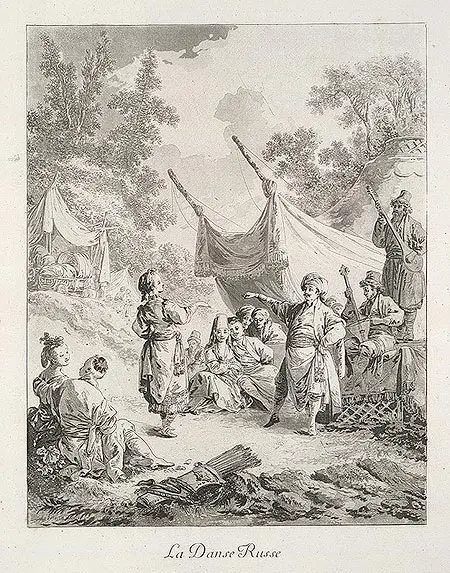

Le Prince has plenty of works where Russian clothing is shown without all these oriental fantasies, but it is clear that Ukrainian nationalists are not particularly interested in such pictures…



Furthermore, “Turquerie” era paintings also feature many depictions of westerners dressed in Oriental clothes. By this logic, it would seem Western Europeans were also secret Muslims all along!
Once again, we witness how pseudo-historians of all kinds, delusional to the point of parody, are distorting history in an utterly dishonest and uncultured manner, in their desire to present Russia in a certain ideological light, rather than building their work on actual historical fact.
And, to end this article, I would like to present you this magnificent passage from the Russian “scientist” Fomenko, the foremost developer of the “turban theory”:


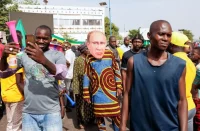
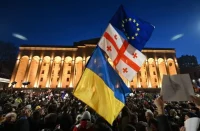





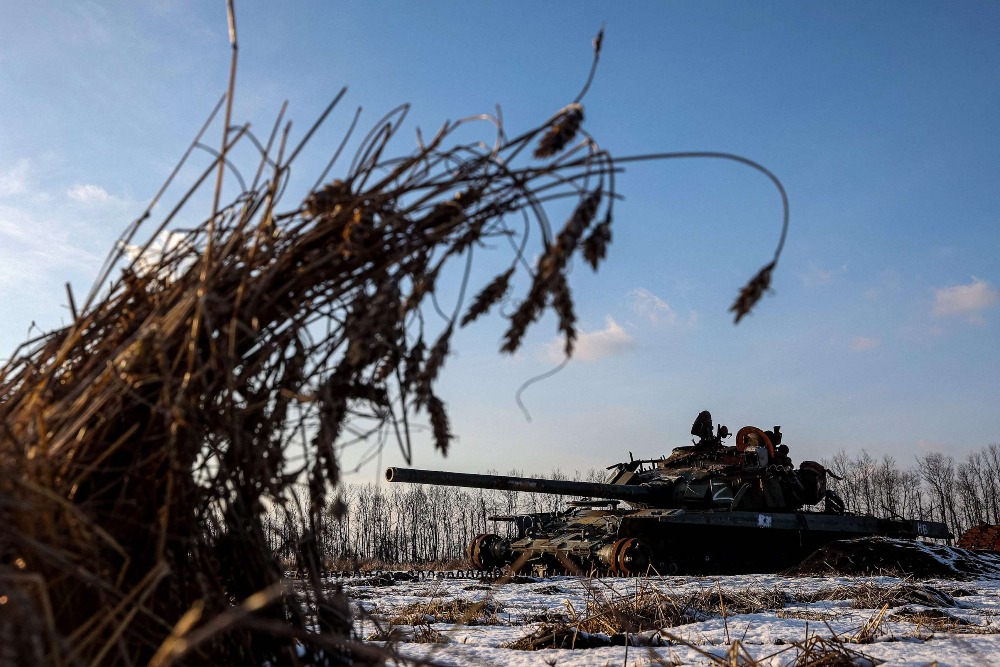





Ukrainians are a bastard people, a mixture of Orientals, Europeans, Scandinavians and anybody else who happened to have wandered through the region and dropping their genes.
It is quite typical for people lacking real heritage to smear those who have.